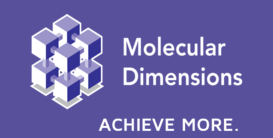热卖产品
新闻详情
【转帖】2-D Clean-Up Kit 双向凝胶电泳--蛋白纯化
来自 :
发布时间:2025-11-05
2D proteomics has become a method of choice for comparing the complete protein profile of any two cells (be it from the same or different organisms). Isoelectric point (pI) and molecular weight are used to separate these biomolecules in two dimensions (hence the term \"2D”), thereby aiding analysis.2D electrophoresis is performed in two steps. The first step is isoelectric focusing which separates proteins on the basis of their pI and the second step is normal SDS-PAGE in which proteins are separated on the basis of their molecular weight. Preparation of the sample for the first dimension is a critical step and the presence of impurities such as nucleic acids, lipids and salts, pose a major hindrance in effective separation of proteins in the 1st dimension. The 2D Clean-Up Kit from GE Healthcare (formerly Amersham Biosciences) is the most effective method of getting rid of such impurities and thus, sample preparation with this kit results in proper isoelectric focusing and minimal streaking.The kit can be used in two cases: when the sample volume is 1-100 ul containing 1-100 ug of protein, and when both sample volume and protein amount of protein are greater than 100 ul and 100 ug, respectively. Only a slight modification of the protocol is required in the latter case, wherein an extra \"wash additive” solution provided with the kit is used. The basic steps of the protocol are, otherwise, the same.Two solutions, \"precipitant” and \"co-precipitant”, are provided with the kit and are used to precipitate proteins from a crude cell extract. Care should be taken to not disturb the pellet after centrifugation. Wash buffer is then used to wash the protein pellet obtained in the previous step. Wash buffer should be cooled to –20oC prior to use. The pellet should be resuspended in the wash buffer properly to remove the contaminants completely. At this step, the samples can be stored at –20oC for up to a week. Pure protein, free from any interfering agents, is obtained upon centrifuging the samples at this step. The pellet is then air dried for a very short period. Extensive drying renders the pellet difficult to resuspend in rehydration buffer (not provided with the kit). The chemicals required for the preparation of rehydration buffer should be of high quality.I have used the kit for preparing samples from bacterial cells. The cells are lysed in a low salt buffer by sonication. I process the lysate using this kit to remove all the non-protein contaminants. The kit also helps in the removal of membrane proteins. Since I only look for cytoplasmic proteins, this is not a problem. I generally process 4-6 samples at one time. However, a greater number of samples could be processed at a time. After preparation, the samples are run on Ettan IPGphor IEF System (GE Healthcare). After separation in the first dimension, the strip is run on the second dimension and the gels are either commassie or silver stained.The contents of the kit are sufficient for 50 purifications. The kit is stable for more than one year and the reagents can be stored at room temperature. However, the wash buffer should be kept at –20oC for at least one hour prior to use. I have found the kit to be very effective in removing non-protein contaminants from the cell lysate. The entire procedure takes nearly one hour. The gel obtained using this protein sample has fewer streaks and much cleaner spots as compared with conventional sample prep procedures. The results are reproducible and I have observed that there is no loss in the intensity of the spots over multiple 2D gels with similar samples.编辑:wudihero007
本文链接:
最新动态
- Immunogold Labeling of Cryosections from High‐Pressure...2024-01-23
- Nature子刊连发两项CRISPR重要成果 - 生物通2024-03-15
- 蚂蚁淘即日起开始代理销售MRC-PPU regents公司原装进口产品2024-01-14
- Molecular dimensions北京代理2024-01-03
- Molecular dimensions上海代理2024-01-06
- 【转帖】2-D Clean-Up Kit 双向凝胶电泳--蛋白纯化2024-01-04
- moravek实验数据比较理想2024-01-24
- MRC产品介绍-蚂蚁淘生物网2024-01-29
- Threshold 免疫测定系统_参数指标_分析测试百科网2024-01-22
- METHOD OF ASSAY2024-01-12

厂家直采
全球直采 正品优价

正品保障
厂家直发 有线跟踪

正规清关
CIF100%正规报关,提供发票

及时交付
限时必达 不达必赔







